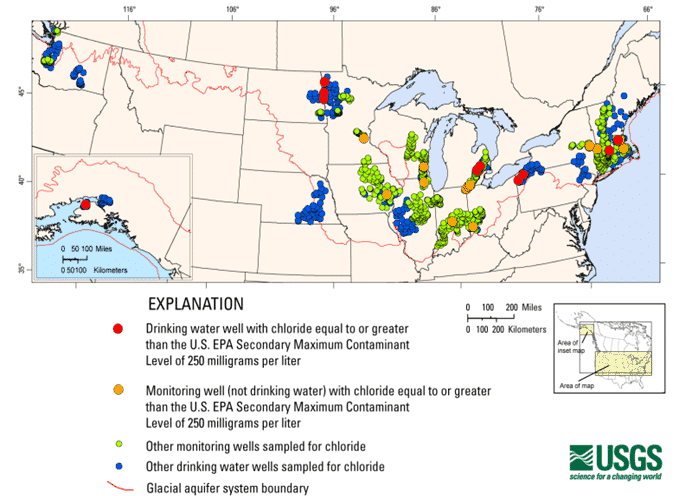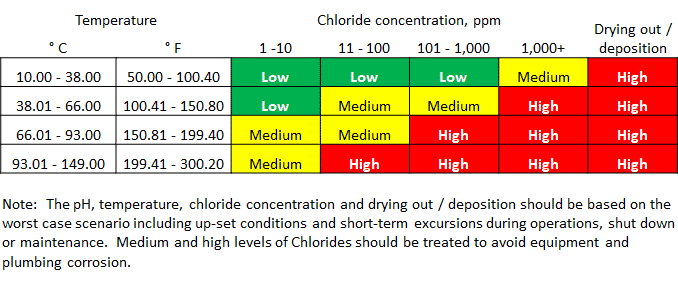Chlorides
The dissolved solids concentration in water is the sum of all the substances, organic and inorganic, dissolved in water. This also is referred to as “total dissolved solids”, or TDS. Calcium, magnesium, sodium, potassium, bicarbonate, sulfate, chloride, nitrate, and silica typically make up most of the dissolved solids in water.
Chloride is a major component of dissolved solids. The use of road salt—sodium chloride, the same chemical as table salt—for deicing is a major manmade source of chloride to surface water and groundwater. Application of road salt in the United States has tripled since the 1970s. Chloride discharge from water softener use, another major source, has not been quantified.
Concentrations of chloride have been increasing in U.S. streams, especially in urban areas affected by snow. Additionally, the presence of chloride increases the potential corrosivity of the water. Corrosion in water distribution systems affects infrastructure and drinking water quality.

Many factors contribute to corrosivity, including elevated concentrations of chloride, pH out of neutral range, elevated concentrations of dissolved and suspended solids, and lower alkalinity.
The potential for water to be corrosive is measured by three different indexes:
Langelier Saturation Index (LSI)
Potential to Promote Galvanic Corrosion (PPGC)
Larson Ratio (LR)
LSI is a measure of the balance between pH and calcium carbonate (CaCO3)—as the LSI value becomes more negative, the water is increasingly under-saturated with CaCO3 and therefore has a greater corrosion potential.
PGC is based on the ratio of chloride to sulfate; the higher the PPGC, the greater the potential for galvanic corrosion of lead in the plumbing system.
LR is defined as defined as the sum of equivalents of chloride and sulfate divided by equivalents of bicarbonate. The LR indicates the corrosivity of water to iron and steel.
States with a history of high Chloride levels
Minnesota
New Jersey
Connecticut
Rhode Island
Indiana
Michigan
New Hampshire
Ohio
Washington
Wisconsin
Pennsylvania
Chloride treatment sequence
Protection (salt still present)
- Katalox Light or sediment filter
- Carbon filtration or One and Done
- Filtersorb SP3*
- Corrtrapp
* If using carbon only in stage 2
Removal
- Sediment
- Carbon filtration
- Reverse Osmosis
- Corrtrapp


